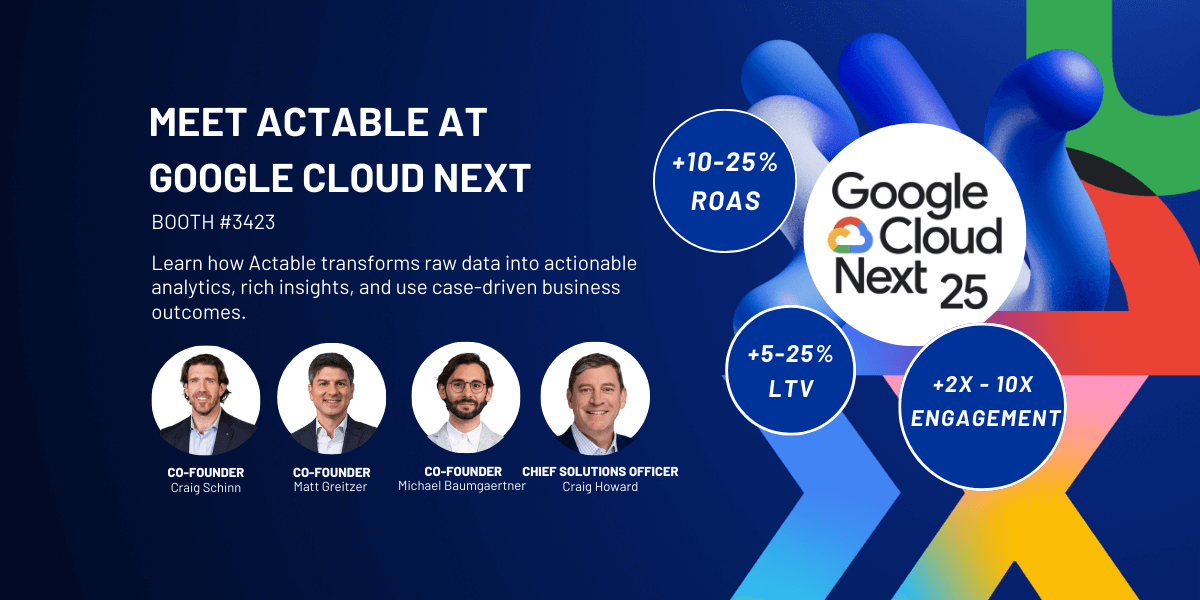Data-savvy marketers feel increasingly pinched by legacy data models where data are siloed, disconnected and often inaccessible. Why? Because silos and fragmentation are the antithesis of a unified customer view, which is the strategic cornerstone for marketing strategies demanded by the best minds in the area – legacy data design is simply not compatible with customer-centric marketing strategies.
In this short piece, we’ll discuss how we create a customer-centric data model focused on actionability and value. Provisioning a customer-centric model of essential ids, metrics, and groupings into a single layer can revolutionize marketing deployment with easy to scale analytics, reporting, and machine learning.
Traditional Data Model
Data models today separate disparate data points generated by customers into silos – usually organized by channel – and thus produce KPIs and reporting that reflect these silos. Marketing reporting drawn from these data models returns channel performance with traditional statistics like click through rates and cost per click, while sales reporting presents metrics such as churn, ATV, and purchase behavior. But nowhere are these data points connected. How is a marketer supposed to optimize their efforts when marketing metrics are not integrated with critical business signals? We all know that channels aren’t customers but conducting any type of analysis on digital marketing is going to incorporate this reductive concept. To put it simply, low cost per clicks don’t matter if those clicks don’t translate into profitable customers.
Worse yet, this way of handling customer data creates a cumbersome task to get a holistic view at the customer level across *all* relevant metrics. To create such a view, a large number of SQL joins and expert knowledge of the data are required, and that does not consider the effort to build a report or extract insights via analytics. In many cases, these difficulties are only compounded by data pipelines that aren’t designed to work together, creating yet more overhead for data engineers to solve for.
A traditional data model makes answering questions like these *really hard*:
- Which products are the most commonly ordered by customers who interact efficiently with a given channel?
- Which campaigns generate the highest LTV customers, and which channels bring them back most efficiently?
- Which customers are most likely to make a second purchase, and why?
- What’s the most efficient way to drive more purchases for a customer who bought a high-value item, but who costs a lot to acquire?
- What customer segments are best engaged by specific sales or promotions?
A Customer-Centric Analytical View
A customer centric analytical view structures data around the customer, where the value and actionability resides. Creating a customer view places the customer at the center of data infrastructure, substantially lessening the complexity of queries necessary to create critical reporting, analytics tasks, and to implement machine learning.
How To Get Started
At Actable, we embrace the power of the customer analytical view to transform your business’s intelligence. The first step in the process is to invest in a centralized data warehouse and associated customer identifier with all relevant metrics, along with important segmentation. You may be able to do this through re-orienting internal resources around customer—centric metrics and engineer and rearchitect accordingly.
If you’d like a head start, we’ve created our own schema for this customer-centric view: The Actable Archetype which you can employ as needed. The Actable Archetype has the exact specifications you need to spin up your own customer-centric view with the following benefits:
- A primary id that allows your data team to extract the most value from your data – across silos
- Represents both the depth of your data with unique metrics and the breadth of your data with as many groupings as necessary
- Easily scale your data to ML and advancing BI capabilities
More details on the Actable Archetype can be found here.
Key Benefits
The biggest benefits in adopting a customer-centric analytical view are in the functionality and insights enabled for customer-centric marketing. With this data structure in place, you can:
- Efficiently generate reports that answer questions like:
- Which (properly tagged) campaigns are acquiring my best customers?
- What is my average customer spend after an exposure to one campaign? For multi-touch attribution, which combinations of multiple campaigns across different channels contribute to customer spend?
- How are my discounting strategies impacting customer loyalty?
- Implement machine learning that optimizes marketing deployment:
- Predict who is most likely to make a second purchase and target them accordingly
- Identify who is most at risk of churn, and re-engage them before it’s too late
- Make bespoke product recommendations to existing customers
- Feed customer-level data into outbound marketing campaigns
- Tie customer value and LTV back to paid and owned outbound channels
In Conclusion
Extracting maximum value and intelligence out of your data is a necessity in today’s competitive landscape. However, the burden of navigating the complicated infrastructure that governs your company’s data silos blocks any effective data-driven marketing strategy. Focus less on logistical hurdles and more on creating value: implement a customer view that places your customer exactly where they should be — at the center of your business.








